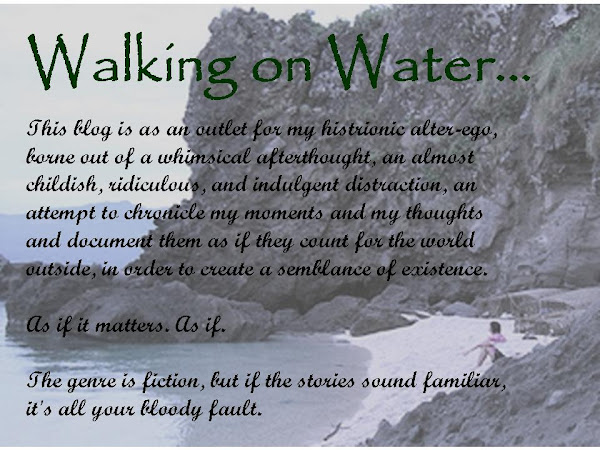Yes, I have been irresponsible. Yes, I am apathetic, I am useless. I am not a registered voter of my beloved country. While I have accepted the ridicule of my fate, I could not help but share a few words about some of the things I feel strongly for. I wouldn't have spoken out if I didn't watch television or read in the ever-reliable links of my Facebook friends that one of this year's presidential aspirants have been labeled as "weird". I was just so appalled by this label that I had to speak out what I think, in defense of the type of people I love the most - the weirdos.
I have nothing against weirdos. In fact, ask even my closest friends, and they will tell you that I have a peculiar fondness for weirdos. To me, eccentricity is not a fault, it is an asset. Calling anyone “weird” is, to me, one of the highest forms of compliment for an individual. Eccentricity denotes an audacity to be different, a boldness to stand apart, to think out of the box, to see things beyond convention. Being weird means one has the capacity to embrace ideals that are generally unacceptable, to dream beyond what is probable, an ability to stand apart from a crowd and adamantly insist on an identity, to tell oneself and the rest of the world, “I am not weird! You are!”
So when the newspapers and Facebook discussion groups circulated the word that presidential aspirant Noynoy Aquino is weird, and that his detractors must have had bad vibes about eccentricity in general prompting them to expose the faintness of his personality and his psyche, I was infuriated and even mortified. Oh please, Mr. Aquino is NOT weird. He is NOT crazy. He is NOT geeky. He is simply a politician, burdened by a legacy of a family name, thrust into the limelight which he can’t handle.
If Mr. Aquino had been truly weird, truly eccentric, as most people describe him to be, he would have passed a number of bills that would make the lives of the weaker and less privileged members of society better. After all, that’s what weirdness is all about, right? Weirdness is about being rebellious enough to speak out for those who have no voice. If he had been truly eccentric, he would have spoken out for the many farmers and workers out there who barely feed themselves at the end of the day because of unjust compensation despite inhuman labor and agrarian conditions. If he was weird enough, he would have gone against his family’s wishes - he would have broken those so-called laws and corporate rules so that the farmers working in Hacienda Luisita would earn more than P9.50 per day and eventually get that patch of land that they so rightly deserve. If he was crazy enough, he would have spoken up, debated and argued against, fought tooth and nail against the strong and apparently undefeatable forces of evil and corruption in the government while he had the chance. Six years in the senate, more years in the congress and even more years in local government service would have afforded him enough chance – if he was weird enough.
I am appealing to the media, or even to Mr. Aquino’s detractors. Please don’t call him “weird” or “geek” or “eccentric” or “crazy”. Oh please, let’s give the real weirdos and eccentrics of this world enough justice. The weirdos are the ones that stand out, they are the ones who speak out, they are the ones who make loud, convention-defying statements even with their silence. The crazy ones are the ones who dream the most outrageous of dreams, and who live their lives in pursuit of these dreams. As that Apple commercial once said, the crazy ones are the misfits, the rebels, the round pegs in the square holes who dream of changing the world, and who actually do!
Mr. Aquino is not weird. He is not eccentric. He may appear slow, weak and scrawny-looking, but so did Abraham Lincoln. He may have done poorly in his schools, but so did Albert Einstein. He may just be a rich, bourgeoisie kid raised by affluent parents with a silver spoon in his mouth when he was born, but so was Mahatma Gandhi. He may have been an unruly kid while he was growing up, but Nelson Mandela grew up that way too. He may be sick in the mind and psychiatrically incapable of being President of a republic, but so were several of our past presidents (Or so I declare).
You see, being eccentric doesn’t disqualify anyone from a claim to a presidency. In fact, eccentricity IS the ticket to rule a nation. “Because the people who are crazy enough to think they can change the world are the ones who do…”
So please, Mr. Aquino is NOT eccentric. He is NOT a geek. And most definitely, he is NOT weird. He may be battling a psychiatric illness as a lot of people claim, but nah, I just don’t think he’s crazy enough.
Otherwise, I would have been campaigning for him.












